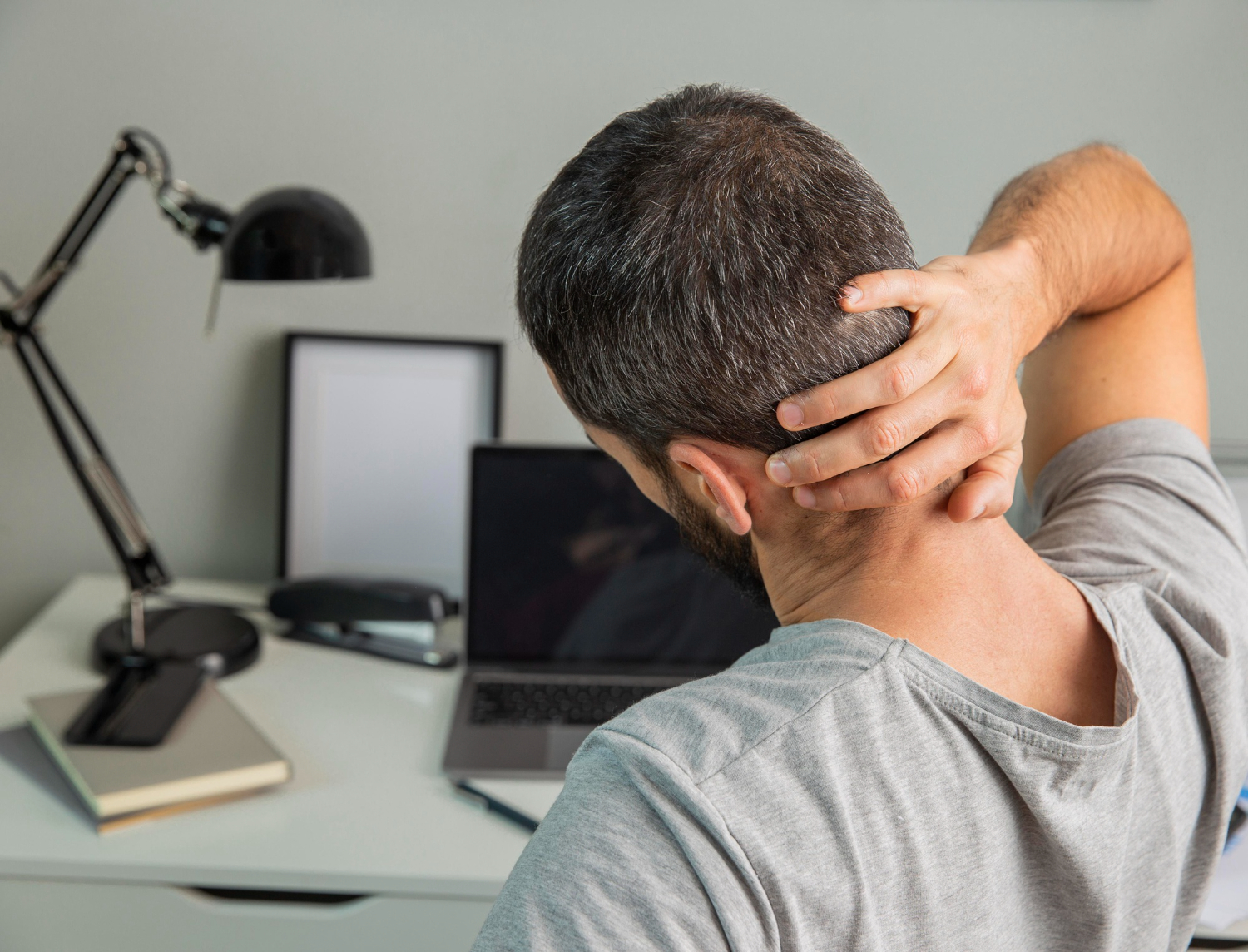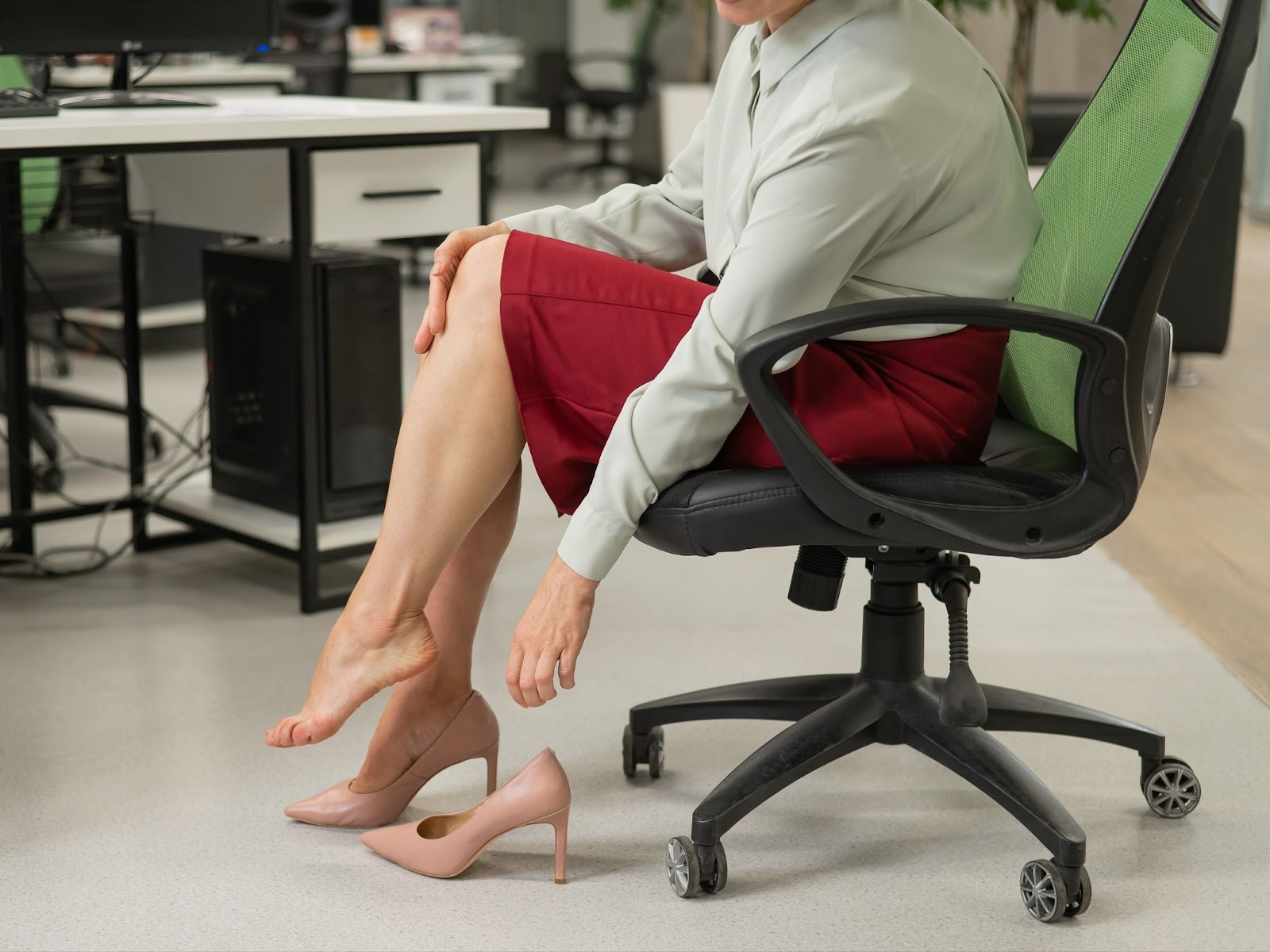That persistent ache in your lower back. The nagging tightness in your shoulders. The blurry vision after a few hours at your computer. Many of us accept these discomforts as a normal part of the workday.
We might blame a poor night’s sleep or the stress of a deadline, but the real culprit is often hiding in plain sight your desk setup. Bad desk ergonomics can turn your workspace into a source of chronic pain and discomfort.
If you spend your days at a desk, your body is constantly interacting with your chair, desk, and computer. When these elements are not aligned with your body’s natural posture, the strain adds up.
This article is a diagnostic tool to help you identify the warning signs. It will help you figure out if your desk is working against you and what to do about it.
1. You Have Constant Neck and Shoulder Pain

Do you find yourself rolling your shoulders or rubbing your neck throughout the day? This is one of the most common signs that your workspace is poorly configured. This type of pain often stems from your monitor’s position.
If your screen is too low, you’re forced to crane your neck downwards for hours. If it’s too high, you’re tilting your head back, straining the muscles in your neck and upper back. Similarly, a monitor placed off to one side will cause you to twist your neck, leading to stiffness and pain on one side. Over time, this misalignment can lead to serious muscle imbalances and chronic pain that follows you even after you’ve logged off for the day. Your shoulders might also be hunched forward because your desk is too high or your keyboard is too far away, adding to the tension.
2. A Nagging Lower Backache is Your Companion

That dull, persistent ache in your lower back isn’t just a sign of getting older. It’s a loud and clear signal that your chair is failing you. The human spine has a natural S-shaped curve, and a good office chair should support this. Bad desk ergonomics often involve a chair that offers little to no lumbar support.
When your lower back isn’t properly supported, the muscles in that area have to work overtime to hold your spine in the correct position. This leads to muscle fatigue and pain. Additionally, if your chair is too high, your feet might dangle, putting pressure on the back of your thighs and causing your pelvis to tilt backward, which flattens the natural curve of your lower spine. A chair that’s too low forces your knees above your hips, creating a similar strain.
3. Your Wrists and Hands are Sore

Tingling, numbness, or soreness in your wrists and hands are serious red flags. These symptoms are often related to the position of your keyboard and mouse. When you type or use your mouse, your wrists should be in a neutral, straight position.
If your keyboard is positioned too high, you’ll have to bend your wrists upwards to type. If it’s too low, they bend downwards. Both positions compress the nerves and tendons that run through the narrow carpal tunnel in your wrist. Repetitive strain from an awkward wrist posture can lead to conditions like carpal tunnel syndrome, which can cause significant pain and weakness in the hands. The constant pressure from resting your wrists on the hard edge of a desk can also contribute to this discomfort.
4. You Suffer from Frequent Headaches and Eye Strain

Do you end your workday with tired, dry eyes or a throbbing headache? Your computer screen is the likely cause. Digital eye strain is a real condition caused by staring at screens for extended periods, and bad desk ergonomics make it much worse.
This can be caused by a number of factors. A screen that is too bright or too dim forces your eyes to work harder to focus. Glare from overhead lights or a nearby window reflecting off your screen can also cause you to squint and strain your eyes. Furthermore, the distance of your monitor is important. If it’s too close or too far away, your eye muscles are in a constant state of tension as they struggle to maintain focus. This relentless effort can easily trigger tension headaches that center around your eyes and temples.
5. You Experience Tingling or Numbness in Your Legs

That “pins and needles” feeling in your legs and feet isn’t something to ignore. Poor circulation is another symptom of a poorly designed workspace. This issue usually points directly to your office chair.
If your chair seat is too long, its edge can press into the back of your knees, compressing nerves and blood vessels. This restricts blood flow to your lower legs and feet. Similarly, sitting with your feet dangling because the chair is too high can have the same effect. While sitting for long periods is a known health risk, a chair that actively cuts off circulation compounds the problem significantly, leading not only to discomfort but also increasing your risk for more serious circulatory issues over time.
Your Quick Ergonomics Checklist
Think your setup might be the problem? Go through this simple checklist right now to see how your workspace measures up.
- Is the top of your monitor screen at or slightly below eye level?
- Are your neck and head in a relaxed, neutral position?
- Does your chair’s backrest support the natural curve of your lower back?
- Are you sitting upright with your shoulders back?
- Are your elbows bent at roughly a 90-degree angle?
- Are your wrists straight and in line with your forearms when you type?
- Are your feet flat on the floor or on a footrest?
- Are your knees at or slightly below the level of your hips?
- Is your monitor about an arm’s length away?
- Is your screen free from distracting glare?
If you answered “no” to several of these questions, it is time to make a change.
Take Control of Your Comfort and Health
Recognizing these signs is the first step toward a healthier and more comfortable workday. You don’t have to accept pain as part of your job. Making adjustments to your desk setup can have a profound impact on your physical well-being and productivity. Investing in proper ergonomic equipment is an investment in your own health.
For years, Ergo Global has been dedicated to creating healthier work environments. We understand the connection between physical comfort and professional success. Our range of ergonomic chairs, height-adjustable desks, and smart accessories are designed to work with your body, not against it. We believe that everyone deserves to work without pain.
Don’t let bad desk ergonomics dictate how you feel.
Talk to us to explore solutions that will transform your workspace.



